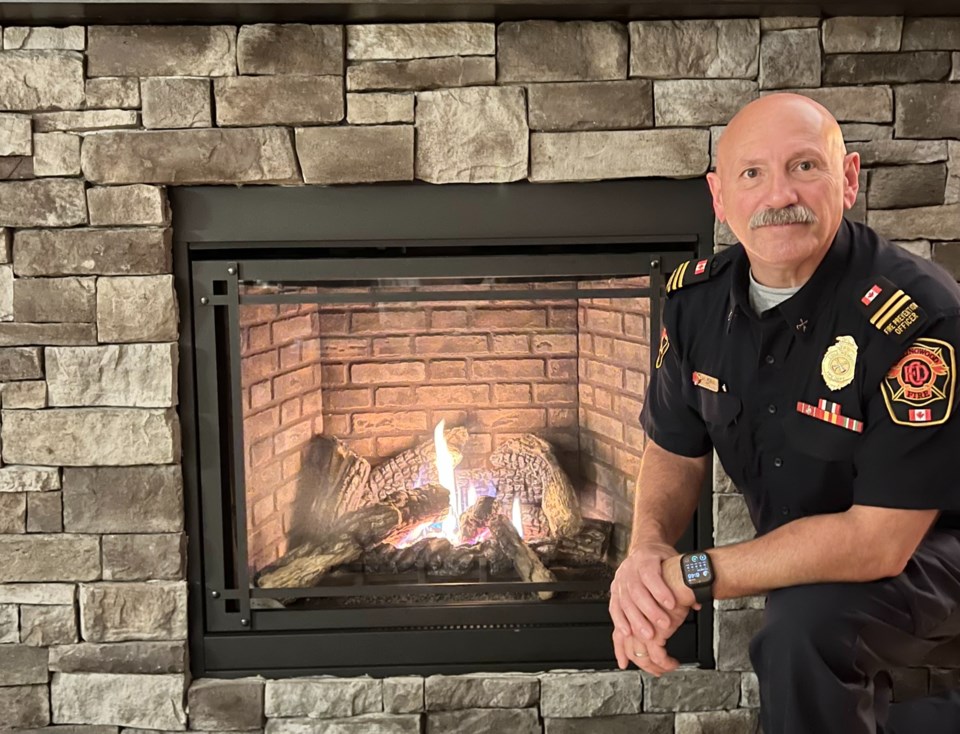The following home heating safety tips were provided by the fire prevention team at the Collingwood Fire Department.
*****
This autumn, the Collingwood Fire Department wants you to fall into some fire safety habits.
This month is about being proactive by ensuring proper cleaning and maintenance of furnaces and fireplaces in your home. The Collingwood Fire Department wants you to be proactive to make sure you stay warm while staying fire-safe before temperatures and snow start falling.
Furnaces
Furnaces that burn fuel such as gas, oil or wood are highly recommended to be inspected and maintained at least annually to ensure safe operation. The only person that can inspect your furnace is a certified technician who works for a TSSA-registered contractor.
Ensure that you book a certified technician to inspect your furnace as it’s your responsibility.
Even though you as an owner cannot inspect your furnace you can do other things to ensure you and your family’s safety including:
- Examining the heating system occasionally to look for any deterioration including; water stains, corrosion, leakage, etc.
- In forced-air systems clean the furnace air filters frequently – at least twice a heating season.
- Keep the area around the furnace free from dust lint, rags, paint, drain cleaners and other materials or chemicals that could catch fire or explode if they become too hot.
- Make sure air outlets are not covered by carpets or blocked by debris.
- Make sure walls, other obstructions or new renovations do not block the heating system’s air supply.
Wood-burning Fireplaces
Wood-burning fireplaces also are to be inspected and maintained annually by a WETT (Wood Energy Technology Transfer) certified chimney sweep. Start thinking about booking your appointment today.
As an owner, you have the responsibility to ensure your wood-burning fireplace is in a safe condition. To do so ensure you check and perform the following:
- Check chimney for cracks, loose bricks, or missing mortar as well chimney liner for signs of deterioration.
- Check chimney cap for weather deterioration.
- Check damper (movable plate that sits above the fireplace before the flue) to ensure no debris is preventing it from opening and closing to ensure proper ventilation.
- Keep the area around the fireplace free from decorations and other combustible materials.
- Consider placing a guard or screen in front to protect your children and pets from getting burned.
- Ensure cold ashes are cleaned out by either sweeping or vacuuming and dispose of them correctly outside. (Be aware coals can remain hot for up to three days.)
- Test the function of your fireplace by lighting small pieces of wood using a firelighter or match just to ensure that the smoke exits vertically from your fireplace.
- Only burn dry, seasoned firewood. Lumber, painted, or treated wood releases chemicals into your home compromising the air quality.
- Utilizing wet wood can increase creosote buildup which is one of the main causes of chimney fires.
So, the question you need to ask yourself is… What happens if you don't clean your chimney?
If you don't have your chimney cleaned once a year, creosote accumulates in your chimney, which can lead to a chimney fire. Also, a dirty chimney can cause a build-up of toxic, deadly gases such as carbon monoxide, which are harmful to inhale or may cause death.
Gas Fireplaces
These fireplaces are also highly recommended to be inspected annually by a certified technician who works for a TSSA-registered contractor.
Some basic safety tips include:
- Do not move or alter the arrangement of logs in your gas fireplace as it could potentially cover up vents which can ultimately lead to carbon monoxide poisoning.
- The front glass can reach dangerously high temperatures. Ensure children maintain a good distance from the fireplace or we recommend placing a safety screen or barrier to prevent any contact.
- Do not put objects near the air-circulating passageways or fans or combustible materials near hot surfaces.
- If you notice the pilot light or flames go out while turned on, wait five minutes minimum prior to relighting to give time for the gas to clear from the fireplace.
- Do not use the fireplace if the front glass is cracked or broken.
- If any unusual odours or flames can be smelled or seen shut off the fireplace immediately. This could indicate that it is not operating properly, and a certified technician needs to come and investigate the fireplace prior to the next use.
- Make sure to test your smoke and carbon monoxide alarms monthly.
- Ensure you have working smoke alarms on every level of your home including the basement and outside all sleeping areas.
- Ensure you have working carbon monoxide alarms on every level of your home, outside all sleeping areas, and is recommended between 1.5 to six metres from sources that produce carbon monoxide.
For further information on fire safety contact the Collingwood Fire Department at 705-445-3920.



